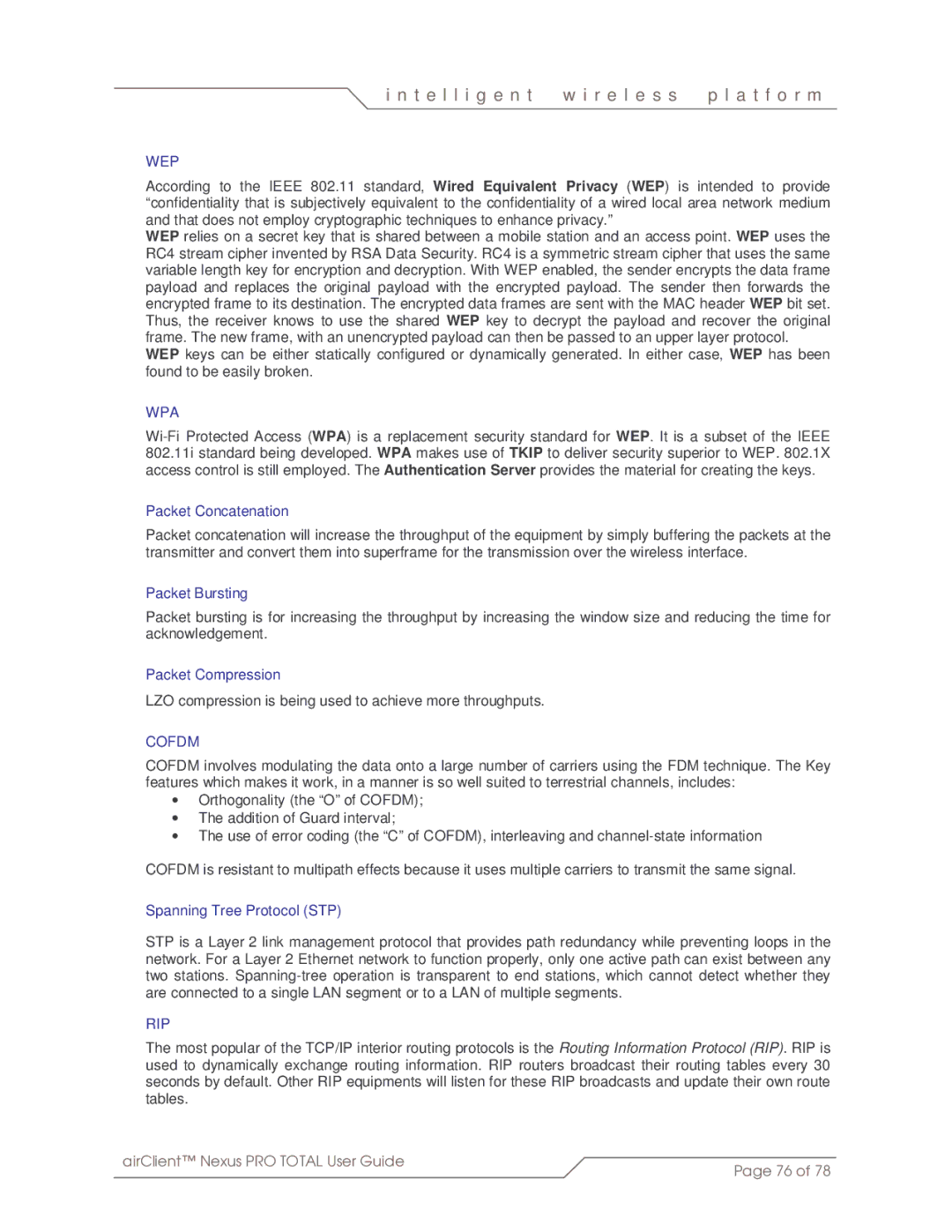
i n t e l l i g e n t | w i r e l e s s | p l a t f o r m |
|
|
|
WEP
According to the IEEE 802.11 standard, Wired Equivalent Privacy (WEP) is intended to provide “confidentiality that is subjectively equivalent to the confidentiality of a wired local area network medium and that does not employ cryptographic techniques to enhance privacy.”
WEP relies on a secret key that is shared between a mobile station and an access point. WEP uses the RC4 stream cipher invented by RSA Data Security. RC4 is a symmetric stream cipher that uses the same variable length key for encryption and decryption. With WEP enabled, the sender encrypts the data frame payload and replaces the original payload with the encrypted payload. The sender then forwards the encrypted frame to its destination. The encrypted data frames are sent with the MAC header WEP bit set. Thus, the receiver knows to use the shared WEP key to decrypt the payload and recover the original frame. The new frame, with an unencrypted payload can then be passed to an upper layer protocol.
WEP keys can be either statically configured or dynamically generated. In either case, WEP has been found to be easily broken.
WPA
Packet Concatenation
Packet concatenation will increase the throughput of the equipment by simply buffering the packets at the transmitter and convert them into superframe for the transmission over the wireless interface.
Packet Bursting
Packet bursting is for increasing the throughput by increasing the window size and reducing the time for acknowledgement.
Packet Compression
LZO compression is being used to achieve more throughputs.
COFDM
COFDM involves modulating the data onto a large number of carriers using the FDM technique. The Key features which makes it work, in a manner is so well suited to terrestrial channels, includes:
•Orthogonality (the “O” of COFDM);
•The addition of Guard interval;
•The use of error coding (the “C” of COFDM), interleaving and
COFDM is resistant to multipath effects because it uses multiple carriers to transmit the same signal.
Spanning Tree Protocol (STP)
STP is a Layer 2 link management protocol that provides path redundancy while preventing loops in the network. For a Layer 2 Ethernet network to function properly, only one active path can exist between any two stations.
RIP
The most popular of the TCP/IP interior routing protocols is the Routing Information Protocol (RIP). RIP is used to dynamically exchange routing information. RIP routers broadcast their routing tables every 30 seconds by default. Other RIP equipments will listen for these RIP broadcasts and update their own route tables.
airClient™ Nexus PRO TOTAL User Guide | Page 76 of 78 |
|
